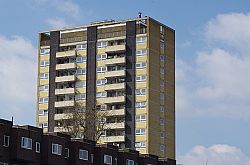

A cross-party group of MPs have warned that Ministers are risking people's lives because safety reforms after the Grenfell Tower disaster have been too slow and "simply not good enough".
Over two years since the Grenfell disaster took the lives of 72 people, a parliamentary inquiry concluded that the Government is taking too long to remove potentially dangerous cladding from hundreds of house blocks. Also despite promising in July 2017 to "urgently assess" building regulations, it has taken 23 months to publish proposals for consultation.
The Housing, Communities and Local Government Committee said: "the Government must pick up the pace of reform, before it is too late and we have another tragedy on the scale of Grenfell Tower".
In May Government figures revealed there were still 328 high-rise residential ad publicly owned buildings in England fitted with cladding similar to that of the Grenfell disaster. However the pace of repairs has been so slow that only one was fixed last month, leaving tens of thousands of people living in blocks that breach building safety rules.
Ministers have made £600 million available for the removal of the specific type of aluminium composite material (ACM) cladding used on Grenfell, but not other panels used on hundreds of other buildings that are believed to be equally combustible.
Clive Betts, Committee Chairman said: "the Government cannot morally justify funding the replacement of one form of dangerous cladding but not others".
"Much more progress should also have been made on developing a comprehensive building and fire safety framework".
New building regulations remain several months away at least, and the conclusions of the first phase of the delayed public inquiry into how the fire spread are not expected before October. As we wait, fears of another disaster grew last month when the wooden cladding and balconies on an apartment block in Barking went up in flames. No one was hurt but building safety experts said that people would have died if the fire had happened at night like Grenfell. Despite this the material was allowed under current building regulations and residents of Samuel Garside House have been told they should move back in next week.
The Committee cited evidence from the Royal Institute of British Architects, that building regulations remained largely unchanged and that "we are potentially still constructing unsafe buildings".
MPs also took evidence from Dame Judith Hackitt, who reviewed the building regulations, she said Ministers have lost momentum for reforms. The National Fire Chiefs Council agreed with her and said the decision to ban only certain types of combustible cladding was inadequate and that virtually nothing has been done to prevent another fire like Grenfell.
Matt Wrack, the leader of the Fire Brigades Union said: "time and time again we have raised the issues in this report, but the silence from Government is deafening. This is a national emergency which is being met by the Government with utter complacency".
The Committee also warned that Ministers have unacceptably delayed plans to compel landlords to listen to tenants' complaints, despite evidence that Grenfell residents' safety fears were ignored by the council.
A spokesperson for the Ministry of Housing, Communities and Local Government said: "public safety is paramount and within days of the Grenfell Tower fire a comprehensive building safety programme was put in place to ensure residents of high-properties are always kept safe".
"We have committed up to £600m to fund the removal and replacement of unsafe ACM cladding on high-rise social and private residential buildings. Ultimately building owners are responsible for the safety of their building and we expect them to carry out work quickly - anything less is unacceptable".
"At the same time, we are supporting the bereaved, survivors and their families of the Grenfell Tower Tragedy and have already committed over £100m".